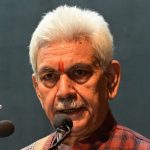In the serene valleys of Kashmir, where the rivers whisper secrets to the chinars and the mountains stand as timeless sentinels, a festival unfolds each year with an elegance as ancient as the land itself. Shivratri, the night of Lord Shiva, is celebrated with unparalleled devotion across India. Yet, among the Kashmiri Pandits, this night of divine union and cosmic dance takes on a character of its own. Unlike the rest of the country, which venerates the great deity on the fourteenth night of the waning moon, the Kashmiri Pandits pay their homage a day earlier, on the thirteenth night—Trayodashi. This is not an anomaly, nor a simple deviation, but a tradition deeply rooted in the soul of Kashmiri heritage, woven through centuries with threads of devotion, philosophy, and cultural memory.
Known as Haerath, this celebration is not merely a single night of fasting and prayer but an elaborate observance spanning twenty-three days, each imbued with its own significance. The echoes of Kashmiri Shaivism, the mystical tradition that flourished in this valley, reverberate through its rituals. Unlike other streams of Shaivism that emphasize the anthropomorphic form of Shiva, Kashmiri Shaivism venerates him as the supreme consciousness, formless yet omnipresent. The essence of Haerath lies in this philosophy, where devotion is expressed not through idols but through sacred vessels filled with water and walnuts, symbols of the boundless nature of divinity.
The roots of this tradition can be traced back to the Nilamat Purana, an ancient scripture that predates many of the later Hindu texts. It details the customs of the people of Kashmir, their sacred rites, and their reverence for Shiva in a manner distinct from the rest of the subcontinent. The legend speaks of King Nila, who allowed the Saraswat Brahmins to settle in the valley under the condition that they honor the local traditions, one of which was the unique observance of Shivratri. Over time, this practice evolved into the grand festival of Haerath.
Even the very name Haerath carries whispers of history. Some say it is derived from ‘Hari-rat’ or ‘Harishat,’ the divine night of Lord Shiva’s union with Parvati, while others trace its origins to Persian influences, linking it to the word ‘Hairat,’ meaning astonishment. This etymology finds its roots in a tale from the reign of Jabbar, a cruel Pathan governor, who once decreed that Shivratri be celebrated in the summer instead of the customary winter. As the festival night arrived, snow fell unseasonably, as if the heavens themselves rejected this forced alteration of sacred time. The astonished people sang a couplet that still lingers in Kashmiri memory, cursing the wretched Jabbar who turned summer into winter. And thus, the word Haerath became enshrined in both language and tradition.
The days leading up to Haerath are filled with meticulous preparations. Homes are cleansed, symbolic of inner purification, and prayers begin in earnest. The nights are illuminated with devotion, culminating on Trayodashi in the sacred Vatuk Puja, where families gather around the vessels of sanctified water and walnuts, invoking the formless divinity of Shiva. The following day, Chaturdashi, is marked by Salam, a celebration of feasting and togetherness, an acknowledgment of the divine grace that sustains life.
Unlike many other Hindu traditions that emphasize strict fasting, the Kashmiri Pandits embrace a more inclusive approach, where devotion and sustenance walk hand in hand. The bitter cold of Kashmir’s winters shaped not only the people but also their customs. The festival falls in the heart of this icy season, when the land is draped in snow and survival itself is an act of faith. In such times, nourishment becomes sacred, and thus, the Haerath feast includes delicacies of meat and fish, not as mere indulgences but as offerings to the divine. This practice, woven through centuries, stands as a testament to the Kashmiri belief in a harmonious existence—where devotion is not about renunciation alone but about embracing the gifts of life with gratitude.
Yet, Haerath is not just about the rituals and the feast; it is a bridge between generations, a living tradition that has withstood the trials of history. The forced exodus of the Kashmiri Pandits in the 1990s scattered them across the world, severing them from the land they had called home for millennia. But exile could not sever their connection to Haerath. Across continents and time zones, Kashmiri Pandits continue to gather, lighting their lamps, whispering the old prayers, soaking walnuts in sacred vessels, and preparing the meals that have been a part of this festival for as long as memory can stretch. In these moments, they find a piece of their lost homeland, preserved not in geography but in faith.
In modern times, as debates about dietary customs and religious orthodoxy emerge, the Kashmiri Pandits remain steadfast in their traditions. For them, Haerath is not a contradiction but a reflection of their deep-rooted spirituality—a reminder that Shiva’s grace is boundless and that devotion can take myriad forms. It is a festival that transcends the mundane and touches the eternal, where every prayer, every meal, every gathering is an echo of an unbroken lineage stretching back through time.
As the Haerath night unfolds each year, the air in Kashmiri homes fills with an ancient reverence, with the soft glow of lamps flickering against the cold winter’s breath. The walnuts, swollen with sacred waters, are distributed as prasad, carrying the blessings of Shiva to each devotee. And in that moment, whether in the snow-laden valley of Kashmir or in distant lands where exile has taken them, the Kashmiri Pandits remember who they are, holding fast to the divine rhythm of their heritage. Haerath is not just a festival; it is an identity, a legacy, and above all, a testament to the enduring spirit of a people who have carried their traditions through centuries, through exile and return, through summer and winter, through darkness and light—always devoted, always resilient, always waiting for the snowfall that whispers the presence of Shiva.
In diaspora communities across the globe, Haerath is celebrated with undiminished fervor, a testament to the enduring spirit of Kashmiri Pandit culture. The echoes of prayers, the fragrance of incense, and the joyous laughter of families gathered in devotion reaffirm that Haerath is more than just a festival—it is a divine journey. This sacred event nurtures the soul, brings people together, and ensures the survival of Kashmiri identity, even in the face of adversity. Through the celebration of Haerath, Kashmiri Pandits continue to honor their past, celebrate their present, and pass on the legacy of devotion and unity to future generations.
Haerath is a living example of how tradition, when rooted in faith and culture, transcends the barriers of time and space. It remains an emblem of spiritual renewal, cultural pride, and intergenerational connection—truly the ‘King of Festivals.’
(Author is RK Columnist and can be reached at: [email protected])









